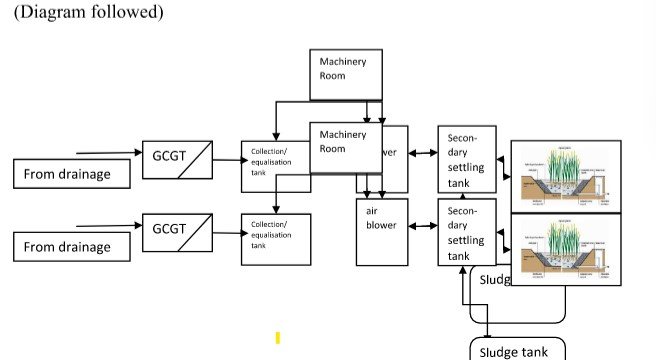
FINISH Society gives a new lease of life to Dungarpur lake
Water bodies are an integral part of a city’s beautification & eco-system challenge but maintaining them can pose quite a formidable challenge. However, the Dungarpur Municipal Corporation has set up a brilliant example by rejuvenating the Gep Sagar Lake and a nearby pond using a waste water treatment plant, the implementation of which has been done by FINISH Society around four years back. Before the water treatment came into the picture, untreated grey water was entering the lake and polluting it. Visitors and locals found it difficult to go near the lake due the stench, however the scenario is different now. A part of the lake has been turned into a bird sanctuary and a park has been developed adjacent to it around two years back for visitors and tourists. 33-year-old tea stall owner Harish Patedar, who has a stall near the lake and the treatment plant, says that earlier it was difficult to stand near the lake even for seconds but now it has more visitors and even he has more customers. “I came here five years back and earlier this whole area was polluted, full of moss but after treating the water, this was followed by developing a park and a sanctuary. Today, the place is flooded with tourists especially from Gujrat on Sundays as it is very near the border.” He added that he has noticed regular and timely cleaning of the water treatment plant. Another tea stall owner Ramesh Chandra Patedar, who is fairly new in the area says it is perfect for business. Assistant Engineer, Municipal Council, Dungarpur, Vikas Legha is all praise for FINISH Society for collaborating with them in this project. He says that over 60,000 litres of water is being treated every day before entering the lake and pond. Legha who is posted in Dungarpur for five years says: “We are taking many measures to beautify and keep our city clean and as a consequence we have received the ‘Cleanest City’ title under 50,000 population and seventh rank
in India under general category of clean cities.” He also talks about the waste management and source segregation happening in the city, adding that they have received a brilliant response from the citizens and people are cooperatingvery well. He sounds elated when he says: “It feels great to say that we have100 percent collection and transportation followed by recycling andmanagement after sorting.” He also adds that Dungarpur was the first ODF(open defecation) free city in Rajasthan. FS Project Manager, Dungarpur,Narendra Sharma says, “We would not be able to achieve this without support from the Municipal Council.”m mLegha says that the treated water may not be fit for drinking but can be used foragricultural purposes at least. One can also spot boats in the lake not just for boating and tourism but the ones with bins for regular cleaning of weeds as well.The cleaning mechanism can be explained as follows. The waste water enters the grease trap from the grit chamber/grease trap (GCGT) where settleable solids are removed by gravity which further enters the equalisation tank which is also used as the pumping tank which then enters the aeration tank containing MBBR (Moving Bed Biofilm Reactor). Aeration is provided through bubble diffusers to provide oxygen for the microbial growth to fully disperse the plastic media. The over flow from the MBBR tank enters the settling tank. Here the settling takes place and after sufficient retention time the clear water flows to the HCWL (Horizontal Constructed Wet Land). The sludge settled at the bottom is removed periodically. HCWL is an engineered mimic of a natural wetland. The mechanism of removal of pollutants in HCWL are chemical, physical and biological. After removal of suspended solids, the remaining ones are degraded biologically by bacteria attached to the reed plants like typha or phragmites and segment surfaces. Nitrogen removal in the HCWL is by using bacteria in aerobic zones to nitrates which get converted to Nitrogen by denitrifying bacteria in anoxic zones. The plants also uptake phosphorus significantly. The final result meets RPCB standards and is fit for discharge into the lake. The settled sludge from the settling tank is periodically drained with the use of a sludge pump into a sludge holding tank. The sludge can be disposed of as feed into a biogas plant or to the sanitary land fill, after moisture reduction.



